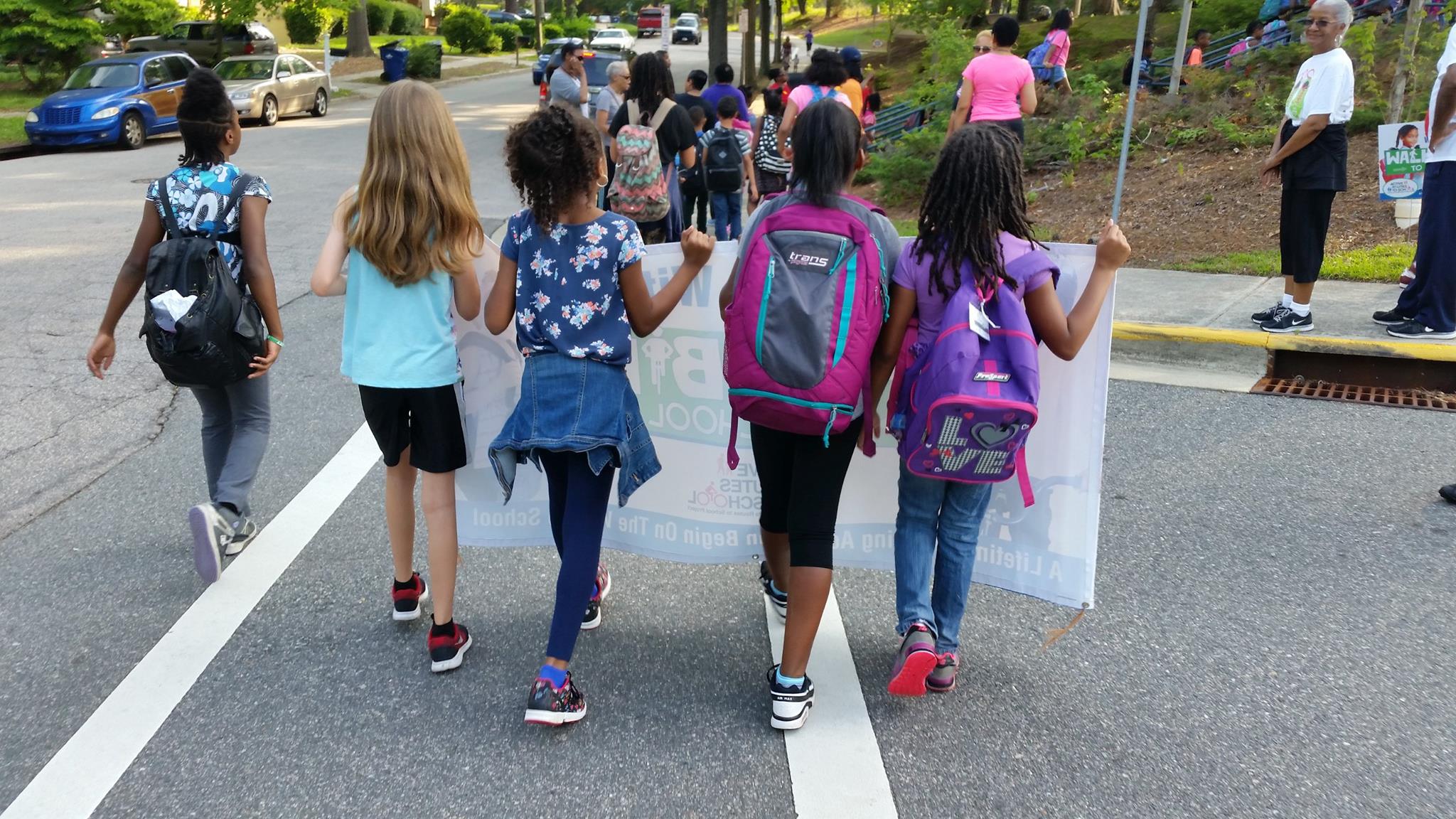Prioritizing safety where children and youth walk and bike, a good first step

The fact that approximately 15 pedestrians die on U.S. streets every day is a sobering thought. Pedestrian deaths rose by 12 percent between 2006 and 2015 (according to a crash statistic by the National Highway Traffic Safety Administration). Creating safe places for everyone to be active is a goal for many communities across the U.S., many of which are committing to eliminating traffic fatalities and serious injuries with an approach called Vision Zero.
A focus on improving safe walking and bicycling in school zones, and other places where youth are present, is vitally important both to protect this vulnerable population, and because it provides a realistic starting point to employ infrastructure improvements and enforcement efforts to positively impact driver behavior and pedestrian safety in a community.
But what does this good idea look like in the real world? Cities and towns are designing programs to tackle tough transportation issues – such as speed – starting in places where youth regularly walk and bike. In January 2018, New York City Mayor Bill de Blasio announced the fourth consecutive year of declining traffic fatalities after adopting a Vision Zero plan, driven by a 32 percent drop in pedestrian fatalities. New York City was able to address speed issues in part by starting in school zones.
The National Center for Safe Routes to School, housed at the UNC Highway Safety Research Center, presented the first Vision Zero for Youth Leadership Award in 2017 to Mayor Eric Garcetti and the City of Los Angeles to recognize how the city combined its Safe Routes to School Program with Vision Zero to prioritize the safety of LA’s youth.
Nancy Pullen-Seufert, Senior Research Associate and National Center for Safe Routes to School Director, led the Vision Zero for Youth: An Initiative to Protect Children and Move Communities in Big Ways session at the Vision Zero Advocate Conference in Toronto on March 2 and spearheads annual events like Bike to School Day and Walk to School Day.
Communities use National Bike to School Day and Walk to School Day to highlight the benefits of walking and biking and bring attention to the need for any safety improvements. Both are annual events that draw national attention and participation, garnering support from across the United States.
Last year, local event organizers invited more than 1,000 mayors to their Walk to School Day event and one quarter of events hosted a mayor or other elected official. These events serve as powerful opportunities for elected officials to talk about their priority for traffic safety and plans for the future.
Year-over-year, these events have included a growing number of communities, small and large, from Hawaii to Maine. Last May, Bike to School Day saw record breaking numbers with over 3,000 schools registered, a 19.2 percent increase from the previous year.
Directions is a free, online publication of the University of North Carolina Highway Safety Research Center. No permission is needed to reprint from articles, but attribution is requested. Sign up to receive Directions here.
Executive Editor: Caroline Mozingo
Managing Editor: Marie Melendez
Graphic Designer: Graham Russell
